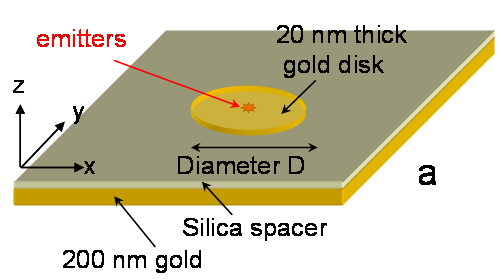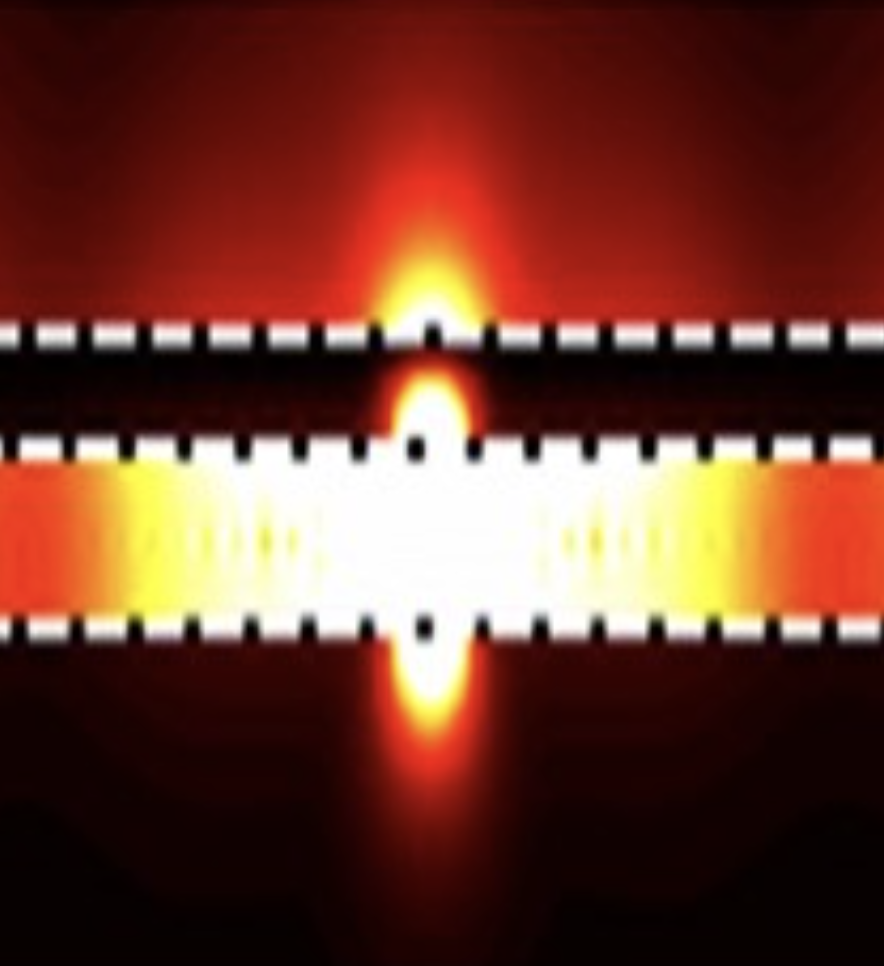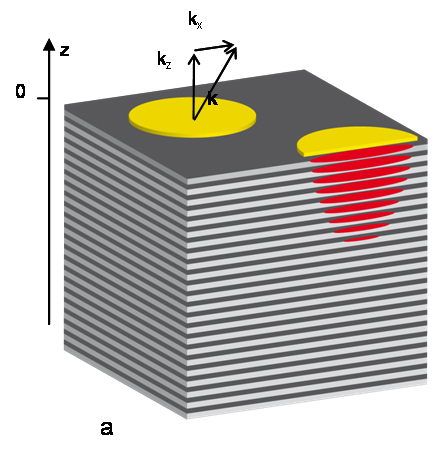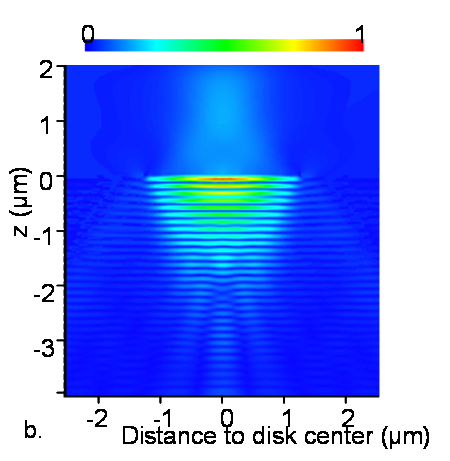Plasmonics and metallic cavities
Plasmonic patch antennas
We experimentally demonstrated the control of the spontaneous emission rate and the radiation pattern of colloidal quantum dots deterministically positioned in a plasmonic patch antenna. The antenna consists of a thin gold microdisk separated from a planar gold layer by a few tens of nanometers thick dielectric layer. In collaboration with the groups of Jean Jacques Greffet (LCFIO Palaiseau), Agnès Maitre (INSP Paris) and Benoit Dubertret (LPEM, Paris), we study the emission of colloidal quantum dots inserted in plasmonic optical patch antennas. The plasmonic patch antenna proposed in Phys. Rev. Lett. 104, 026802 (2010), consists in a thin gold microdisk 30 nm above a thick gold layer (fig. 1a), with the emitter positioned in the dielectric spacer (figure a). The small 30 nm separation between the disk and the gold film provide a large confinement of the electromagnetic field in the vertical direction. The finite size of the disk leads to confinement in the plane. Broadband large Purcell factor is theoretically predicted (figure b). In the present work, we have inserted small clusters of around 50 CdSe/CdS colloidal nanocrystals in the antenna. The cluster presents a cylinder shape with typical lateral radius of 5 nm and height of 13 nm. A deterministic positioning of clusters inside each antenna with a precision of 25nm is obtained using the in-situ lithography technique.
Reference:
- C. Belacel et al., “Controlling Spontaneous Emission with Plasmonic Optical Patch Antennas,” Nano Letters, 2013, 13(4), pp 1516–1521. DOI: 10.1021/nl3046602.
Tamm cavities
Light can be confined at the interface between a distributed Bragg reflector and 2D metallic layer: the confinement arises, on one side, from the metal’s negative dielectric constant, and on the other side, from the DBR’s stop band.
Our group has shown strong three-dimensional confinement of a Tamm plasmon with a very simple microstructure consisting of a thin gold microdisk on top of a planar GaAs/AlGaAs Bragg mirror. The Tamm plasmon (TP), formed at the interface between DBR and metal, is laterally confined to the dimensions of the gold disk, resulting in a discrete mode spectrum with quality factors of up to 1200 . The modes exhibit a zero in-plane wave vector, allowing for an excellent coupling to quantum dot excitons and the vertical emission of photons. With the in-situ lithography technique, we couple single quantum dots to the confined Tamm plasmon modes. We observe an acceleration of the spontaneous emission if the quantum dot transition is at resonance with the mode, while a remarkably strong inhibition of the spontaneous emission (by a record factor of up to 40) is measured if the quantum dot transition is off-resonance.
Reference:
- O. Gazzano et al., “Evidence for Confined Tamm Plasmon Modes under Metallic Microdisks and Application to the Control of Spontaneous Optical Emission”, Physical Review Letters, 107, 247402.



